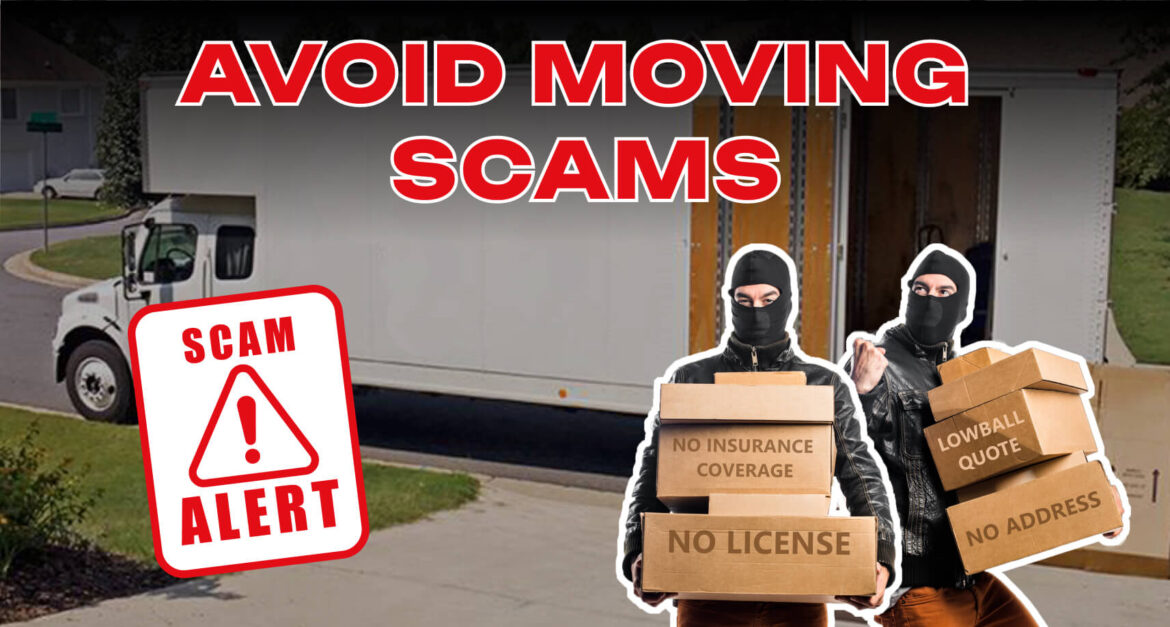
Moving to a new home is an exciting yet challenging experience, and choosing the right moving company is crucial to ensuring a smooth transition. Unfortunately, the moving industry has its fair share of fraudulent companies that take advantage of unsuspecting customers. Moving scams are more common than people think, and falling victim to one can lead to significant financial loss, stress, and even loss of personal belongings. Therefore, it is essential to be aware of these scams and take proactive steps to avoid them.
By learning how to identify red flags, verifying a mover’s credibility, and understanding your rights, you can protect yourself from being deceived by dishonest companies. In this guide, we’ll explore everything you need to know about moving scams, including common warning signs, key factors to consider when selecting a moving company, and practical tips for safeguarding your move.
Whether you’re relocating across town or to a different state, these insights will help you make an informed decision and ensure a hassle-free moving experience.
Understanding Moving Scams and How They Work
Before you can effectively protect yourself, it is important to understand the different types of moving scams and how they operate. Scammers in the moving industry use a variety of tactics to exploit customers, and recognising these schemes early can save you time, money, and unnecessary stress.
One of the most common types of moving scams involves fraudulent companies offering extremely low estimates to attract customers. These movers often provide a quote without conducting a proper assessment of the items to be moved. Once they have possession of your belongings, they drastically increase the price, citing additional fees for services that were not previously disclosed. If the customer refuses to pay, the company may hold their belongings hostage until they comply with the new price.
By staying informed about these fraudulent tactics, you can take precautionary measures and ensure that your move is handled by a trustworthy moving company. Safeway Moving, for example, is a fully licensed and insured moving company that prioritizes transparency and customer satisfaction, ensuring you never fall victim to unethical practices.
Red Flags to Watch Out for When Hiring a Moving Company
Not all moving companies operate with integrity, and knowing what to look for can help you avoid becoming a victim of moving scams. There are several warning signs that indicate a company may not be legitimate, and paying attention to these red flags can save you from a costly mistake.
- No Physical Address or Office: Reputable moving companies have a physical office where customers can visit or verify their operations. If a moving company does not have a legitimate business address, it is a major red flag.
- Extremely Low Estimates: If a moving quote seems too good to be true, it probably is. Scammers use low-ball estimates to lure customers in before drastically increasing the price on moving day.
- No Licensing or Insurance: A legitimate moving company should be registered with the Federal Motor Carrier Safety Administration (FMCSA) and have a USDOT number. If a mover cannot provide proof of licensing and insurance, avoid working with them.
- Unprofessional or Generic Communication: If a moving company lacks professionalism, uses vague language, or avoids answering specific questions about their services, consider it a red flag.
- Demand for Large Upfront Deposits: Most reputable movers do not ask for a large deposit before the move. Be cautious of companies that request full or partial payment in advance.
Choosing a reliable company like Safeway Moving ensures that you work with experienced professionals who are committed to providing high-quality moving services with no hidden fees or unethical practices.
How to Verify the Credibility of a Moving Company
Once you identify a moving company you are considering hiring, the next step is to verify their legitimacy. This process involves thorough research and careful evaluation to ensure they are not involved in moving scams. Here are key steps to take when verifying a mover’s credibility:
1. Check FMCSA Registration
The Federal Motor Carrier Safety Administration (FMCSA) regulates moving companies that operate across state lines. Visit their website to check if the company has a valid USDOT number and a clean record.
2. Read Online Reviews
Customer reviews on platforms like Google, Yelp, and the Better Business Bureau (BBB) can provide valuable insight into a company’s reputation. Be wary of companies with overwhelmingly negative reviews, unresolved complaints, or no online presence at all.
3. Ask for References
A reputable mover should be able to provide references from past customers. Reach out to these references to ask about their experiences.
4. Get a Written Estimate
Ensure you receive a detailed written estimate that includes all potential fees. This protects you from unexpected price increases later.
By following these steps, you can ensure that your move is handled by a trustworthy and experienced company like Safeway Moving, which adheres to industry regulations and prioritizes customer satisfaction.
Practical Tips for Avoiding Moving Scams
1. Start Planning Early
Give yourself plenty of time to research and compare moving companies. Rushed decisions increase the risk of falling for scams.
2. Avoid Cash Payments
Reputable movers accept credit cards or checks, providing you with a record of your transactions. Avoid paying in cash, as it makes it harder to dispute fraudulent charges.
3. Get Everything in Writing
Always insist on a written contract that outlines all services, fees, and terms. Never rely on verbal agreements.
4. Trust Your Instincts
If something doesn’t feel right about a moving company, it’s better to walk away and look for a more reputable option.
Online estimates can provide a rough idea of moving costs, but for the most accurate pricing, request an in-home or virtual survey from the moving company. Be cautious of companies that offer extremely low quotes without assessing your belongings.










